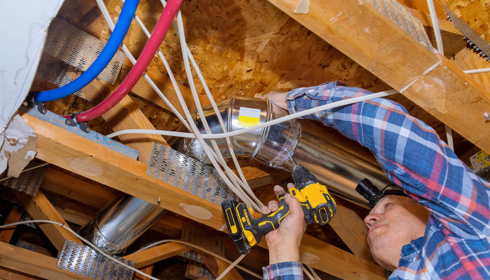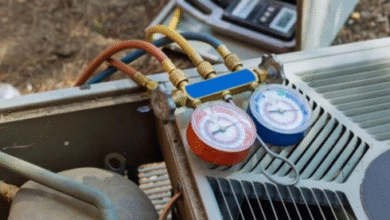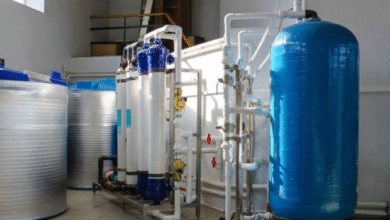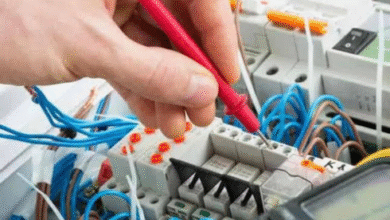Choosing the Right Heating System for a New Home: What Builders and Homeowners Should Know

There’s something uniquely exciting about stepping into a brand-new house. Fresh paint on the walls, unused appliances still gleaming, that clean scent of a space that hasn’t yet been lived in—it’s like opening a blank notebook, full of possibilities. But here’s the thing people don’t often talk about: behind all the beauty and finishing touches, some of the most important choices for comfort are hidden in the walls and under the floors. Heating, for instance, can make or break how livable and efficient that home feels once winter rolls around.
Why heating decisions matter early on
When a house is being built, everything is timed and sequenced down to the week. If a homeowner waits until the last minute to decide how their heating system should look, it’s often too late to do it right. Ductwork, vent placement, and even the size of utility rooms need to be coordinated early. A good builder will usually remind clients that choosing a system isn’t just about picking a furnace model—it’s about designing a heating plan that suits the home’s layout, size, and even the climate. That’s why new construction heating installation is more than just a line item on a project checklist; it’s one of the foundations for long-term comfort.
Customizing to fit the home, not the other way around
Every family lives differently. Maybe one person works from a home office and wants it warmer during the day, while the rest of the house can stay cooler. Maybe there’s a basement that will double as a playroom or an in-law suite. These little lifestyle details matter when deciding whether to go with a traditional furnace, radiant floor heating, or even a hybrid system. It’s not unusual for HVAC contractors to walk through blueprints with homeowners, pointing out where extra vents might be handy or suggesting zoning systems that allow for temperature control in different areas. Done right, the system feels invisible—you don’t notice it because the temperature is always just right.
Energy efficiency isn’t just a buzzword
Heating is one of the biggest energy expenses in any household. New homes have an advantage, though: modern building codes usually require better insulation and air sealing than older houses had. Pairing those improvements with high-efficiency furnaces or heat pumps makes a real difference, not just in utility bills but also in reducing the home’s carbon footprint. It’s worth asking about energy ratings and how the equipment will perform over the next 10 to 20 years. Spending a little more upfront often means saving a lot down the line, especially when fuel costs inevitably rise.
Avoiding cookie-cutter solutions
Some builders stick to the same heating setup in every project because it’s easier. But heating isn’t a “one size fits all” feature. A 1,200-square-foot bungalow in a mild climate doesn’t need the same system as a 3,500-square-foot house in a region where snow hangs around for months. That’s where it pays to work with experienced contractors who actually listen. They’ll calculate heat load requirements instead of just guessing, making sure the system isn’t oversized (wasting energy) or undersized (leaving you shivering in January).
The builder–homeowner partnership
Building a new home is stressful enough without throwing in HVAC jargon. Still, homeowners should push for clarity. A good contractor will explain options in plain English—whether that’s choosing between gas and electric furnaces or weighing the benefits of radiant heat. Clear communication prevents costly surprises later, like realizing a utility closet is too small for the unit you actually wanted. Getting heating right is one of those details that future-you will thank present-you for.
Looking beyond the furnace
While furnaces are still the go-to for many households, alternatives are becoming more common. Heat pumps, for example, have gained popularity in areas where winters are moderate. They provide both heating and cooling, which makes them appealing for year-round comfort. Hydronic systems, which circulate hot water through pipes, can create a cozy radiant warmth that feels completely different from blown air. Every option has trade-offs in terms of installation cost, maintenance, and efficiency. Thinking through those choices during the design stage is what turns a house into a comfortable home instead of just a pretty structure.
Don’t underestimate placement
It might sound trivial, but where the equipment is placed can make a world of difference. Furnaces tucked into cramped spaces are harder to maintain. Poorly planned duct runs can leave certain rooms colder than others. And sometimes noise becomes an issue if a system is installed too close to bedrooms. Proper planning avoids those headaches. That’s why heating installation for new homes should always include discussions about location, accessibility, and airflow—not just the shiny specs on the equipment itself.
The importance of professional installation
Even the most advanced system will underperform if it’s installed poorly. Skilled HVAC professionals don’t just hook up machines; they balance airflows, seal ducts, and test performance before signing off. In new builds, this precision matters more than ever. Homeowners are investing not just in a piece of equipment but in a system that’s expected to run smoothly for decades. Cutting corners at this stage often leads to breakdowns or uneven heating that could have been avoided with a proper install.
Thinking long term
Homes evolve. Families grow, basements get finished, attics turn into guest spaces. Heating systems should be flexible enough to adapt to those changes. That might mean adding zoning capability or leaving room in utility spaces for future upgrades. An experienced contractor will often suggest ways to “future-proof” a system, making sure it can handle changes without a complete overhaul. It’s an investment mindset rather than a short-term patch.
Wrapping it all together
At the end of the day, comfort isn’t glamorous, but it’s vital. Nobody moves into a new house to spend the first winter fiddling with thermostats or huddling under blankets. They want peace of mind, knowing the system behind the walls is efficient, reliable, and suited to their lives. That’s why a thoughtful new construction furnace install is worth the planning, the budget, and the conversations with contractors. Because while countertops and paint colors might catch the eye first, it’s the unseen details—like heating—that make a house truly feel like home.



